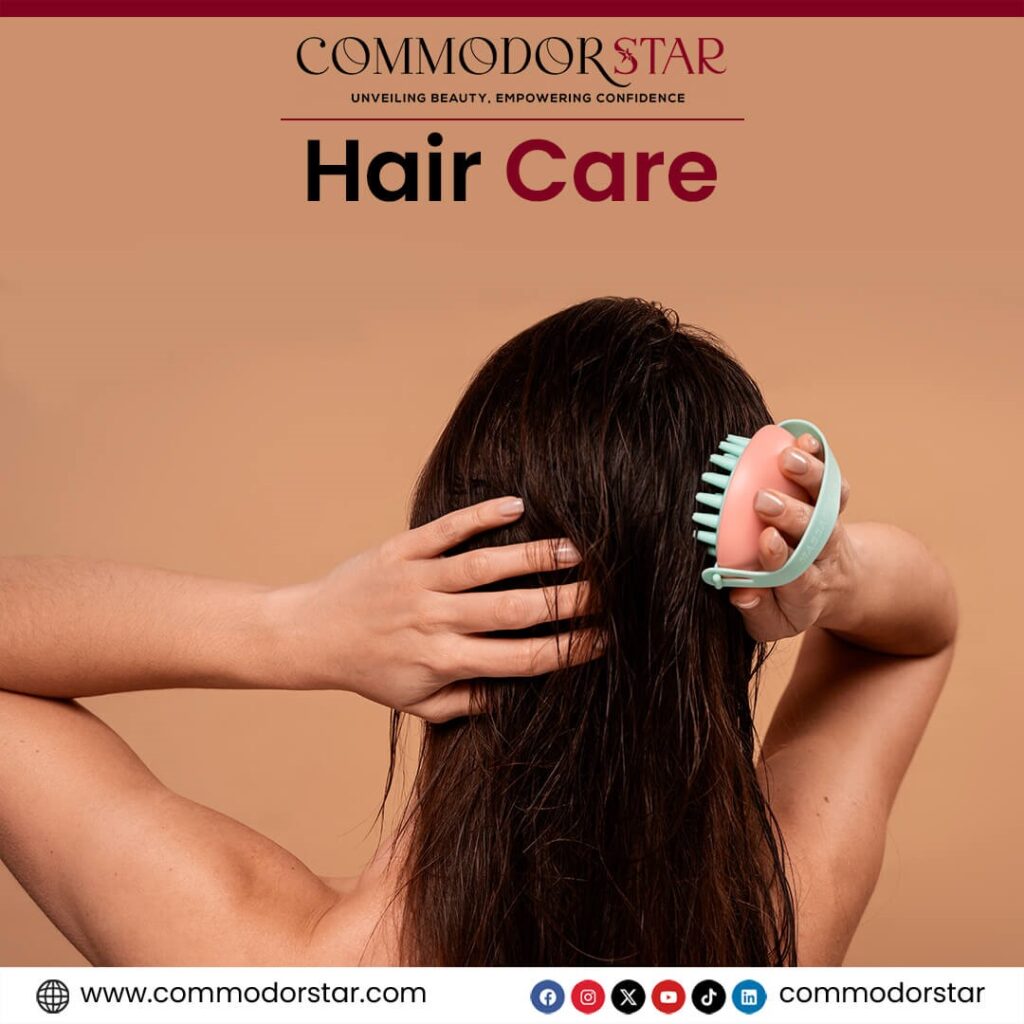Establishing a hair care regimen is similar to starting a skin care regimen. You won’t often stray from one once you’ve found one that suits you.
However, choosing a routine can be a little intimidating, particularly when there are so many options available to those with similar hair types. This is a summary of all the information you require to determine the hair care routine that works best for you. Ultimately, a few elements determine your unique regimen. All these factors—from the way your hair feels to the styles you like—will change the routine you ultimately decide on. Your kind or texture of natural hair. Four categories apply to hair kinds, which might be thin, thick, or coarse Curly kinky, straight, wavy.
Everyone has benefits and drawbacks. For instance, due to oil moving quickly down the hair shaft, straight hair often appears and feels greasy more quickly than curly hair Trusted Source. But there are a few fundamental elements that all routines have in common. There are some basic actions that everyone can benefit from, even though your hair type and concerns will change your routine in some ways. Cleansing strikes a balance between getting rid of debris and product residue (Trusted Source) without depleting the hair of its natural oils. Sebum accumulation without regular washing results in undesired oiliness.

If dead skin is not removed, it will also. Every 28 days, the skin regenerates itself (Trusted Source), and unclean hair may make this obvious. Additionally, you don’t want to leave chlorine on your hair if you swim frequently. It has more time to harm hair and deplete it of its natural components the longer it sits.
Unwanted oiliness is the result of sebum collection without frequent washing. It will also if dead skin is not eliminated. The skin regenerates itself every 28 days (Trusted Source), and dirty hair may highlight this process. In addition, if you swim a lot, you should avoid leaving chlorine on your hair. The longer it sits, the longer it has to damage hair and strip it of its natural elements.
Condition
Conditioners are quite advantageous. In addition to hydrating, there are other benefits like detangling, shininess, and less frizz.
A cationic surfactant is the primary component of a conditioner Trusted Source.
This adheres to wet hair, covering the strands to restore any moisture that may have been stripped by shampoo.
Seal and Moisturize.
If you want to give your hair care even more moisture, you might want to try the two-step moisturize and seal method.
For dry, kinky, or oily hair, this can be especially helpful.
The goal of applying sealing oil and hydrating product is to seal in moisture, not to lock in dryness.
Disentangle
In order to prevent breakage and to make your life easier, detangling is necessary.
To prevent inadvertent hair removal, you must use the proper instrument, such as a wide-tooth comb.
Your hair type will determine how frequently or how little you need to detangle.
Put on Style and Shield
You can pretty much style your hair any way you want to thanks to a variety of tools and techniques like volumizers and gels.
However, if you enjoy using hot tools, you’ll need to use a heat protection spray to shield those strands.
Treat Specific Areas
Spot-treating hair is as easy as identifying the problematic spot and taking action to address it.
For instance, you try a protein treatment since you’re tired of your hair’s frizz.
Alternatively, you may use an extremely nourishing cream made specifically for that area because you’ve noticed that your scalp is feeling particularly dry.
Every step’s product and equipment differ greatly.
There is no specific product or tool that you have to use, even though the majority of individuals follow the aforementioned procedures religiously. Rather, try out several ones until you find the ones that work for you.
Washing and Sanitizing
Shampoo for Clarity. Clarifying products, like a deep-acting shampoo, help to rid the hair of buildup. Because they can eliminate natural oils, limit your use to once a month at most.
Shampoo labeled “daily” As the name implies, this shampoo may be used for routine washing—it need not be used every time your hair feels like it needs a thorough cleaning.
“Daily” or Rinse-off Conditioner.
Most likely, the conditioner that rinses out within a few minutes is the one you use the most. Applying it to the roots can cause a greasy-looking scalp, therefore it’s preferable to apply it to the middle and ends.
Apply Conditioner on the Side.
Use the same application method as before, but don’t rinse this type of conditioner off. An elevated degree of nourishment is made possible by this.
Rich Conditioner. A thorough conditioner might help you stay even more hydrated. These conditioners are great for dry hair because they do not require rinsing out as quickly.
Sealing and Moisturizing.
Hair Cream. A lotion with a cream base can provide further protection against breakage and dryness to hair that has been cleaned and conditioned. A soft, non-stiff grasp is another benefit.
Oil. You use a small amount of oil to a large amount. It nourishes and fortifies strands while enhancing the natural oils in your hair.
Untangling the Cob. While textured or tightly curled hair varieties are exempt from this, wet hair is more prone to breaking when brushed. One less harmful option is perhaps a wide-tooth comb.
Comb. There are a variety of brush kinds. Select a plastic version if you think bristles are too harsh on your hair. Aim to avoid excessive hair brushing. Usually enough is one time every day.
Splatter. Using a detangling spray beforehand can help prevent tears from forming when brushing or combing.
Serum. A detangling serum is a more sophisticated method of taming those knots; it gives hair additional conditioning and softening so combs glide through it with ease.
We Are Here to Help!
If you have any concerns regarding your order, please feel free to Contact Us.


